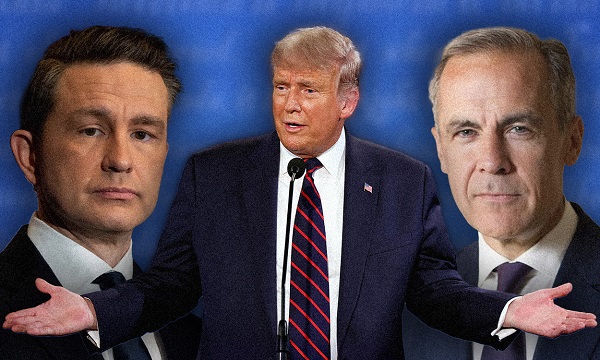COVID-19
Defence minister stands by military’s vaccine mandate amid months-long review
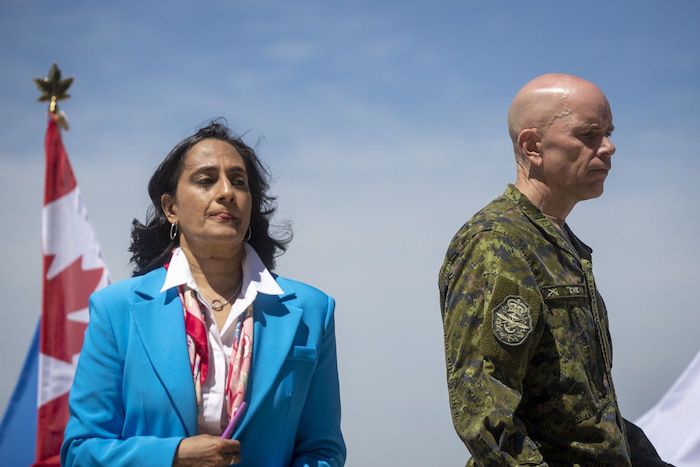
By Lee Berthiaume in Ottawa
The Liberal government is defending the military’s continued use of a vaccine mandate for Armed Forces members as a condition of employment amid pressure to end the requirement and questions about when a promised “tweak” will finally be unveiled.
The Canadian Armed Forces has required since December that all troops receive two shots of a recognized COVID-19 vaccine or face disciplinary proceedings, including forced removal from the military.
While the vast majority of service members have bared their arms for shots, more than 1,100 have not. More than 400 of those have since hung up their uniforms, either voluntarily or involuntarily, with more on their way out.
The requirement remains in place even though mandates for other federal workers have been suspended. The government announced this week that vaccination requirements for international travellers will also be lifted on Saturday.
It was in this context that Conservative Leader Pierre Poilievre this week called on the Liberals to end what he described as the military’s “discriminatory and unscientific vaccine mandate,” though the decision is ultimately up to chief of the defence staff Gen. Wayne Eyre.
On Thursday, Defence Minister Anita Anand voiced support for the mandate as she and other federal ministers briefed Canadians on hurricane recovery efforts in Atlantic Canada.
“It’s a force that must be ready at all times to conduct domestic and international military operations, sometimes in places with limited or no access to specialized medical care, sometimes in very close quarters with their fellow Canadian Armed Forces members,” she said.
“Therefore, the Canadian Armed Forces has a more stringent requirement to enforce health protection measures.”
Anand did note that Eyre is taking a second look at the requirement after the government lifted its mandates for other federal employees. “Pending this review,” she added, “(Eyre)’s directives remain in effect for CAF members until further notice.”
Exactly when that review may be completed remains a mystery, however.
Defence Department spokesman Daniel Le Bouthillier described the review on Thursday as “a complex issue,” with the military having to “balance medical and legal imperatives, ethical considerations, and operational requirements.”
“The CAF will continue to take a measured approach and make a decision when deemed operationally safe to do so.”
The department first reported that the mandate was being re-examined in June, and a draft copy of a revised vaccine policy obtained by the Ottawa Citizen in July suggested vaccine requirements for military personnel would be lifted.
The draft document, which officials said was not approved by Eyre, said military personnel and new recruits would no longer have to attest to their vaccination status.
The document also noted potential legal difficulties ahead to deal with people who were kicked out of the military because of the vaccine mandate, suggesting they could be forced to apply for re-enrolment.
By contrast, other unvaccinated federal public servants were put on leave without pay but allowed to return to their jobs when the mandate was suspended.
However, Eyre indicated in an interview with The Canadian Press last month that a “tweak” was coming in weeks as he tried to find the “sweet spot” between the military’s medical, legal, operational and ethical requirements.
At the same time, he called the mandate necessary to keep the military ready to respond to any emergency, noting that the force was called upon to assist in hospitals and long-term care facilities in Canada, and that many allies and foreign nations still have mandates.
“We need to maintain our operational viability going forward,” he said. “So over the course of the next number of weeks, we will tweak the policy, we’ll put out something amended.”
A number of serving members have unsuccessfully challenged the mandate in court, while some groups and individuals opposed to vaccine mandates, pandemic lockdowns and the Liberal government have used the military’s continued requirement as a rallying point.
This report by The Canadian Press was first published Sept. 29, 2022.
COVID-19
Study finds Pfizer COVID vaccine poses 37% greater mortality risk than Moderna
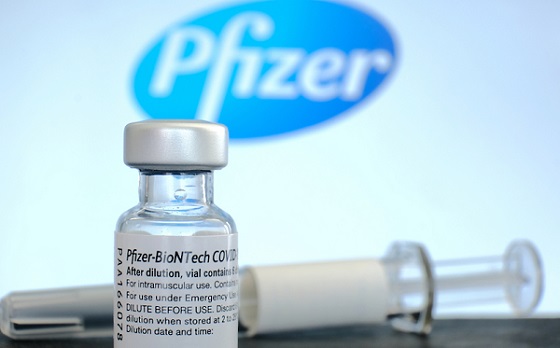
From LifeSiteNews
A study of 1.47 million Florida adults by MIT’s Retsef Levi and Surgeon General Joseph Ladapo finds significantly higher all-cause mortality after Pfizer vaccination compared to Moderna
A new study of 1.47 million Florida adults by MIT’s Retsef Levi and Surgeon General Joseph Ladapo finds significantly higher all-cause, cardiovascular, and COVID-19 mortality after Pfizer vaccination.
The study titled “Twelve-Month All-Cause Mortality after Initial COVID-19 Vaccination with Pfizer-BioNTech or mRNA-1273 among Adults Living in Florida” was just uploaded to the MedRxiv preprint server. This study was headed by MIT Professor Retsef Levi, with Florida Surgeon General Dr. Joseph Ladapo serving as senior author:

Study Overview
- Population: 1,470,100 noninstitutionalized Florida adults (735,050 Pfizer recipients and 735,050 Moderna recipients).
- Intervention: Two doses of either:
- BNT162b2 (Pfizer-BioNTech)
- mRNA-1273 (Moderna)
- Follow-up Duration: 12 months after second dose.
- Comparison: Head-to-head between Pfizer vs. Moderna recipients.
- Main Outcomes:
- All-cause mortality
- Cardiovascular mortality
- COVID-19 mortality
- Non-COVID-19 mortality
All-cause mortality
Pfizer recipients had a significantly higher 12-month all-cause death rate than Moderna recipients — about 37% higher risk.
- Pfizer Risk: 847.2 deaths per 100,000 people
- Moderna Risk: 617.9 deaths per 100,000 people
- Risk Difference:
➔ +229.2 deaths per 100,000 (Pfizer excess) - Risk Ratio (RR):
➔ 1.37 (i.e., 37% higher mortality risk with Pfizer) - Odds Ratio (Adjusted):
➔ 1.384 (95% CI: 1.331–1.439)
Cardiovascular mortality
Pfizer recipients had a 53% higher risk of dying from cardiovascular causes compared to Moderna recipients.
- Pfizer Risk: 248.7 deaths per 100,000 people
- Moderna Risk: 162.4 deaths per 100,000 people
- Risk Difference:
➔ +86.3 deaths per 100,000 (Pfizer excess) - Risk Ratio (RR):
➔ 1.53 (i.e., 53% higher cardiovascular mortality risk) - Odds Ratio (Adjusted):
➔ 1.540 (95% CI: 1.431–1.657)
COVID-19 mortality
Pfizer recipients had nearly double the risk of COVID-19 death compared to Moderna recipients.
- Pfizer Risk: 55.5 deaths per 100,000 people
- Moderna Risk: 29.5 deaths per 100,000 people
- Risk Difference:
➔ +26.0 deaths per 100,000 (Pfizer excess) - Risk Ratio (RR):
➔ 1.88 (i.e., 88% higher COVID-19 mortality risk) - Odds Ratio (Adjusted):
➔ 1.882 (95% CI: 1.596–2.220)
Non-COVID-19 mortality
Pfizer recipients faced a 35% higher risk of dying from non-COVID causes compared to Moderna recipients.
- Pfizer Risk: 791.6 deaths per 100,000 people
- Moderna Risk: 588.4 deaths per 100,000 people
- Risk Difference:
➔ +203.3 deaths per 100,000 (Pfizer excess) - Risk Ratio (RR):
➔ 1.35 (i.e., 35% higher non-COVID mortality risk) - Odds Ratio (Adjusted):
➔ 1.356 (95% CI: 1.303–1.412)
Biological explanations
The findings of this study are surprising, given that Moderna’s mRNA-1273 vaccine contains approximately three times more mRNA (100 µg) than Pfizer’s BNT162b2 vaccine (30 µg). This suggests that the higher mortality observed among Pfizer recipients could potentially be related to higher levels of DNA contamination — an issue that has been consistently reported worldwide:

The paper hypothesizes differences between Pfizer and Moderna may be due to:
- Different lipid nanoparticle compositions
- Differences in manufacturing, biodistribution, or storage conditions
Final conclusion
Florida adults who received Pfizer’s BNT162b2 vaccine had higher 12-month risks of all-cause, cardiovascular, COVID-19, and non-COVID-19 mortality compared to Moderna’s mRNA-1273 vaccine recipients.
Unfortunately, without an unvaccinated group, the study cannot determine the absolute increase in mortality risk attributable to mRNA vaccination itself. However, based on the mountain of existing evidence, it is likely that an unvaccinated cohort would have experienced much lower mortality risks. It’s also important to remember that Moderna mRNA injections are still dangerous.
As the authors conclude:
These findings are suggestive of differential non-specific effects of the BNT162b2 and mRNA-1273 COVID-19 vaccines, and potential concerning adverse effects on all-cause and cardiovascular mortality. They underscore the need to evaluate vaccines using clinical endpoints that extend beyond their targeted diseases.
Epidemiologist and Foundation Administrator, McCullough Foundation
Please consider following both the McCullough Foundation and my personal accounton X (formerly Twitter) for further content.
Reprinted with permission from Focal Points.
COVID-19
Canada’s health department warns COVID vaccine injury payouts to exceed $75 million budget
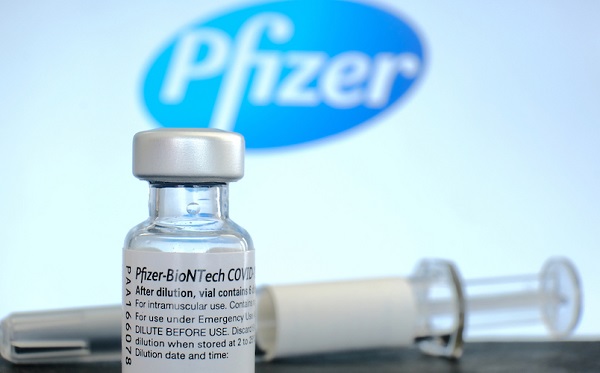
Fr0m LifeSiteNews
A Department of Health memo warns that Canada’s Vaccine Injury Support Program will exceed its $75 million budget due to high demand, with $16 million already paid out.
COVID vaccine injury payments are expected to go over budget, according to a Canadian Department of Health memo.
According to information published April 28 by Blacklock’s Reporter, the Department of Health will exceed their projected payouts for COVID vaccine injuries, despite already spending $16 million on compensating those harmed by the once-mandated experimental shots.
“A total $75 million in funding has been earmarked for the first five years of the program and $9 million on an ongoing basis,” the December memo read. “However the overall cost of the program is dependent on the volume of claims and compensation awarded over time, and that the demand remains at very high levels.”
“The purpose of this funding is to ensure people in Canada who experience a serious and permanent injury as a result of receiving a Health Canada authorized vaccine administered in Canada on or after December 8, 2020 have access to a fair and timely financial support mechanism,” it continued.
Canada’s Vaccine Injury Support Program (VISP) was launched in December 2020 after the Canadian government gave vaccine makers a shield from liability regarding COVID-19 jab-related injuries.
While Parliament originally budgeted $75 million, thousands of Canadians have filed claims after received the so-called “safe and effective” COVID shots. Of the 3,060 claims received to date, only 219 had been approved so far, with payouts totaling over $16 million.
Since the start of the COVID crisis, official data shows that the virus has been listed as the cause of death for less than 20 kids in Canada under age 15. This is out of six million children in the age group.
The COVID jabs approved in Canada have also been associated with severe side effects such as blood clots, rashes, miscarriages, and even heart attacks in young, healthy men.
Additionally, a recent study done by researchers with Canada-based Correlation Research in the Public Interest showed that 17 countries have found a “definite causal link” between peaks in all-cause mortality and the fast rollouts of the COVID shots as well as boosters.
Interestingly, while the Department of Health has spent $16 million on injury payouts, the Liberal government spent $54 million COVID propaganda promoting the vaccine to young Canadians.
The Public Health Agency of Canada especially targeted young Canadians ages 18-24 because they “may play down the seriousness of the situation.”
The campaign took place despite the fact that the Liberal government knew about COVID vaccine injuries, according to a secret memo.
-

 2025 Federal Election2 days ago
2025 Federal Election2 days agoNDP Floor Crossers May Give Carney A Majority
-

 Bjorn Lomborg2 days ago
Bjorn Lomborg2 days agoHow Canada Can Respond to Climate Change Smartly
-

 Alberta2 days ago
Alberta2 days agoPreston Manning: Canada is in a unity crisis
-

 Automotive2 days ago
Automotive2 days agoNew federal government should pull the plug on Canada’s EV revolution
-
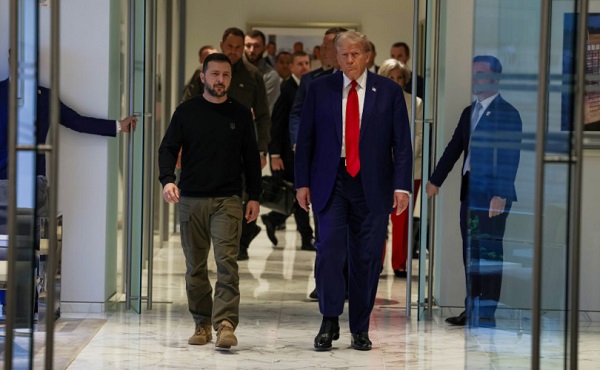
 Business2 days ago
Business2 days agoScott Bessent says U.S., Ukraine “ready to sign” rare earths deal
-

 Business2 days ago
Business2 days agoNew federal government plans to run larger deficits and borrow more money than predecessor’s plan
-

 Mental Health2 days ago
Mental Health2 days agoHeadline that reads ‘Ontario must pay for surgery to give trans resident both penis and vagina: appeal court’ a sign of the times in Canada
-

 Business2 days ago
Business2 days agoChina’s economy takes a hit as factories experience sharp decline in orders following Trump tariffs



